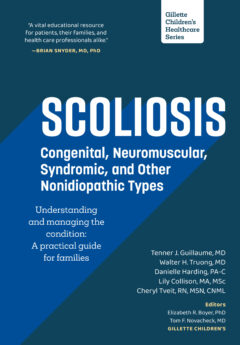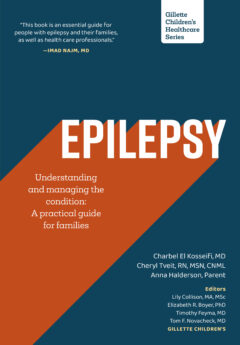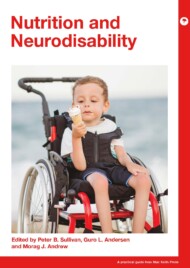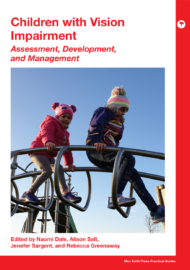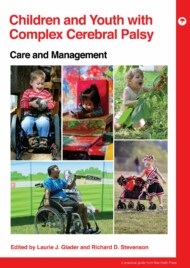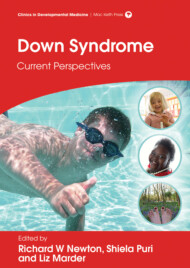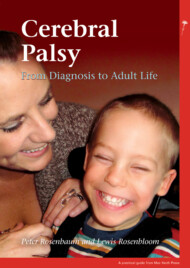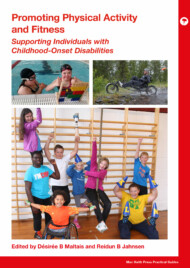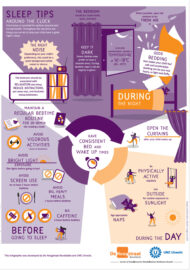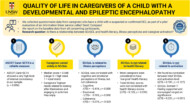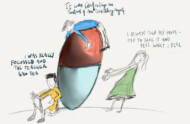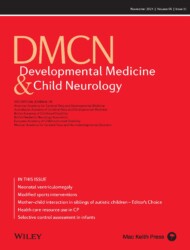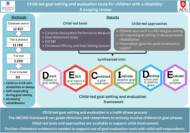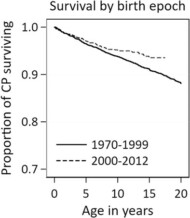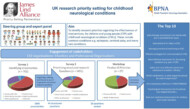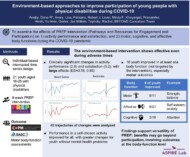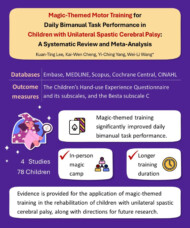Welcome
Start exploring here! We hope this will be a useful resource to help you find the information you need about cerebral palsy and other childhood-onset disabilities. We want to help you to find answers to your questions – so please let us know what else you would like us to cover. Here we are presenting videos, summaries, research information and other resources.
Read on for more
Ways we can help
1
Family-friendly Books
Discover our collection of family-friendly books featuring accessible, research-based insights. These titles include the perspectives of families and individuals with lived experience, offering valuable guidance while supporting parents on their journey.
2
Free Chapters
We have selected a range of chapters from our books, offering helpful insights and practical tips. Our chapters summaries highlight key points. View the full chapter to explore each topic in more depth.
3
The Knowledge Bank
Explore the answers to your questions here. Find out more about conditions, treatments, interventions, and all aspects of care. Follow signposts to find more in-depth, evidence-based information from Mac Keith Press content, as well as other great sources of knowledge.
4
Plain Language Summaries
Plain language summaries are an effective way of communicating scientific research to a wider audience. By presenting the key findings and significance of a study in easy-to-understand language, the content becomes more accessible to more people. Here we present summaries of papers published in Developmental Medicine & Child Neurology (DMCN).
5
Helpful Videos
Here you will find a collection of short videos from authors and editors summarising their work. They cover Developmental Medicine & Child Neurology (DMCN) articles, Mac Keith Press books and e-learning. The aim of the videos is to help viewers get a clear understanding of why the research is important, how it was carried out, and real-world implications.
Gillette Children’s Healthcare Series
The goal of the Gillette Children’s Healthcare Series is to empower families through a greater understanding of their condition and therefore help optimize outcomes for children, adolescents and adults living with these childhood-acquired and largely lifelong conditions.
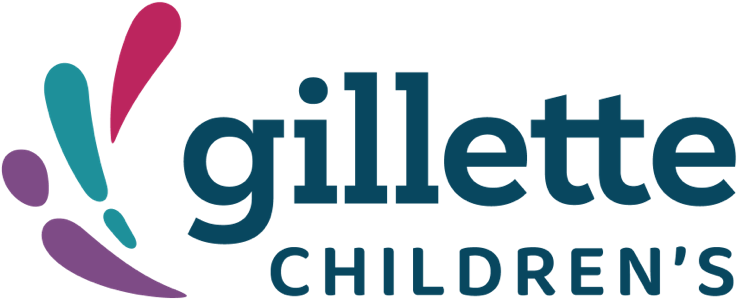
Free chapter downloads
The Knowledge Bank
Explore the answers to your questions here. Find out more about conditions, treatments, interventions, and all aspects of care. Follow signposts to find more in-depth, evidence-based information from Mac Keith Press content, as well as other great sources of knowledge.
Are there activities my child with epilepsy should avoid?
Certain activities may require precautions, such as swimming (with supervision), driving (only after seizure freedom and medical approval), or operating machinery.
Are there activities my child with epilepsy should avoid?
This answer is adapted from section 10.3 of the Gillette Children’s Healthcare Series book on Epilepsy, understanding and managing the condition: a practical guide for families.
In general, children with epilepsy are encouraged to participate in normal activities, including school, sports, and social events, as long as safety measures are in place. While most activities are safe, some may need to be adjusted based on the individual’s seizure type, frequency, and control.
For example, certain activities may require precautions, such as swimming (with supervision), driving (only after seizure freedom and medical approval), or operating machinery. These decisions are typically made in consultation with a healthcare provider.
Open communication with the child’s medical team is essential to determine what is safe and appropriate.
How can parents help their child with cerebral palsy develop independence?
Parents can support their child’s independence in tasks like dressing or eating by breaking these activities into smaller, achievable steps. Using adaptive tools, offering consistent opportunities to practice, and allowing the child to explore solutions at their own pace helps build confidence and skill without overwhelming them. For more information, please read the extract from chapter 21 of ‘Children and Youth with Complex Cerebral Palsy’. Full chapter available to download.
How can parents help their child with cerebral palsy develop independence?
Extract from Glader and Stephenson, ‘Children and Youth with Complex Cerebral Palsy’, Chapter 21, page 330:
Tips for Parents of Children with Complex CP
- Pay attention to how much intellectual and personal energy you are giving toward finding answers for your child. Be sure to carve out times during the day to simply be with your child, other family members, or spouse without thinking about CP and the challenges your child faces.
- Don’t sacrifice reason and good sense to help your child. New therapies will constantly be presented as the treatment for CP. Before trying a new therapy, make a list of the sacrifices the treatment will require you and your family to make. Weigh the emotional and financial costs and the physical, safety, and unknown risks the treatment will present against the possible benefits for your child. Remember that a treatment without any known risks does not mean it is risk free. Discuss these issues with people you trust and your child’s medical team. Set time commitment limits and financial limits and be aware of your expectations about the treatment.
- Your child will have his or her own developmental timeline. When you compare your child to other same aged peers, you may subliminally approach your child with disappointment and he or she may perceive this as something he or she is doing wrong. Focus on the positive points, the things that are working and the small, incremental steps that lead to putting together larger developmental pieces.
- Assess and honor your child’s physical and cognitive energy limits each day. These may change daily. You know your child best. Don’t be afraid to speak up if you think what is best for your child is different from what the experts advise.
- Be aware of what is driving your approach to your child’s therapy/developmental support program. Be honest with yourself and look out for guilt, fear, and hopelessness that are motivating you to push your child and other family members too much. This may be difficult territory to sort through and balance, but is often part of the emotional journey that is a necessary step to accept the CP diagnosis. Remember, it’s your child who ultimately has to participate in the therapy and integrate all the information that comes from your therapy planning.
- Creating a balanced schedule becomes easier as your child’s developmental picture becomes clearer. Over time, as you and your professional team have had a chance to observe your child, you will have a better understanding of how to focus your time and which therapies and treatments work best for your child. In addition, you child’s clinical team may use the Gross Motor Classification System (GMFCS, see Chapter 1) to help guide decision making around goals and treatments.
- Focus on what your child does well and what they like. Integrate interests with opportunities for development. For instance, perhaps a child likes the water. Swimming is an activity that your child can enjoy while also developing their motor skills.
- Explore respite resources in your area including what is offered by local parent-to-parent offices, churches or other religious centers, and state programming that allows for in-home support for your child. Some US states offer programs through Medicaid/TEFRA/Katie Beckett that allow for parents to have respite hours. Additionally, your area may have medical day care centers which offer out-of home respite programs. Contact your local Health and Human Services Agency for more information.
How can parents support a child with vision impairment to become more independent and successful?
Parents can encourage their child with vision impairment by treating them like any other child, fostering independence, and promoting the use of assistive technology. Providing emotional support, learning braille or assistive tools together, and ensuring access to resources like mobility training and specialized equipment also enhance independence and self-confidence.
For more information, please read the extract from chapter 21 ‘Personal Experiences from a Young Person’ from ‘Children with Vision Impairment’. Full chapter available to download.
How can parents support a child with vision impairment to become more independent and successful?
Extract from Dale et al., ‘Children with Vision Impairment’, Chapter 21 ‘Personal Experiences from a Young Person’, p. 260
What is important to me as a young person with a vision impairment:
- Being encouraged to strive for success and to have aspirations; having a disability is not an obstacle for success.
- Recognising that every child or young person with vision impairment is different, just like their peers. What works for one person may not work for another.
- Being listened to and understood.
- Remembering that vision impairment is a spectrum and it is important for others to understand what a young person can or cannot see.
- Focussing on the positives of having a vision impairment such as being part of the vision impairment community and proactively acting on these positives.
DMCN articles
For further information, read the below papers on vision impairment in DMCN:
- Interventions for children with cerebral visual impairment: A scoping review
- Autonomy in children and adolescents with visual impairment: Validation of the Visual Impairment Developmental Autonomy scale
- Early visual training and environmental adaptation for infants with visual impairment and its plain language summary
What are some key strategies for parents to manage feeding difficulties in their child with neurodisability, and how can a multidisciplinary team (MDT) support this?
Parents can manage feeding difficulties in children with neurodisability by creating a calm mealtime environment, ensuring proper positioning, using adaptive feeding techniques and equipment, and modifying food textures. A multidisciplinary team (MDT) can provide comprehensive support, including nutritional assessments, caregiver training, and tailored feeding strategies. For more information, please read the extract from chapter 9 of ‘Nutrition and Neurodisability’. Full chapter available to download.
What are some key strategies for parents to manage feeding difficulties in their child with neurodisability, and how can a multidisciplinary team (MDT) support this?
Extract from Sullivan, Andersen and Andrew, ‘Nutrition and Neurodisability’, Chapter 9 (free download), pp. 153-154
Postural Management and Positioning When Eating
Optimal positioning to improve head and trunk stability during mealtimes provides a critical foundation for both safety and efficiency, and is a priority for all children with feeding difficulties (Benfer et al. 2013). Optimal mealtime positioning influences tone and overall patterns of movement, improves coordination of oral motor movements, enhances respiration and airway protection, provides a mechanical advantage for bolus dynamics, positively influences reflux and gut motility, and improves self-feeding (Hulme et al. 1983). Modification of a child’s sitting position from one of generalised extension to greater flexion (particularly at the hips and knees) can facilitate jaw stability and head flexion (Stratten 1981). A stable and aligned head position, achieved both through overall body positioning and specific head support (including head rests or occipital rolls), may improve position, mobility and coordination of the lips, tongue and oral anatomy (Lanert & Ekberg 1995).
Ideal mealtime positioning involves the child seated upright, with 90-degree hip flexion, feet supported, head in midline and aligned on the anterior–posterior plane, and chin slightly tucked. However, no single optimal position exists for all children. Recommendations for mealtime position should be made in collaboration with the child’s physical or occupational therapist, incorporating individualised findings from video fluoroscopy when appropriate and available (Lanert & Ekberg 1995; Gisel et al. 2003). Options for improving mealtime positioning may include specialised seating (infant feeder seats, wheelchairs or supportive chairs); the adaptation of regular seating using pillows, rolled towels, foam and support straps; or postural support by the care-giver’s body. A tray may provide additional postural support and allow stabilisation of the upper limb and shoulder girdle, to achieve a functional sitting position (Stavness 2006). Whilst an upright position is generally advocated, up to 30 degrees of recline, for children who are unstable in an upright position, reduces lip pursing, gag and tongue thrust (Lanert & Ekberg 1995). The upright position may be more beneficial than recline for children with poor pharyngeal clearance or those requiring a slower bolus flow rate (Morton et al. 1993). Flexed head position and chin tuck improves protection of the airway, decreases risk of laryngeal penetration and aspiration and is particularly helpful for children with a delayed swallow initiation (Lanert & Ekberg 1995). Preliminary evidence suggests that reductions in aspiration from improved position, combined with texture modification of food and fluids, translate into longer-term improvements in respiratory function for children with severe feeding difficulties (Gisel et al. 2003).
For an overview of feeding, nutrition and growth in children with complex CP please read chapter 7 of ‘Children and Youth with Complex Cerebral Palsy: Care and Management’, edited by Laurie Glader and Richard Stevenson. Free chapter download.
DMCN articles
For further information, read the below papers on feeding difficulties in DMCN:
- Prevalence of drooling, swallowing, and feeding problems in cerebral palsy across the lifespan: a systematic review and meta-analyses
- Eating and drinking abilities and respiratory and oral health in children and young adults with cerebral palsy and its plain language summary
- Eating and drinking ability and nutritional status in adults with cerebral palsy and its plain language summary
Submit a question
Let us know what other questions you have. Are there specific topics you would you like us to cover?
Contact us now using the form.
Plain Language Summaries
Plain language summaries are an effective way of communicating scientific research to a wider audience. By presenting the key findings and significance of a study in easy-to-understand language, the content becomes more accessible to individuals with disabilities, parents, caregivers, and others. Here we present summaries of papers published in Developmental Medicine & Child Neurology (DMCN).
Helpful videos
Here you will find a collection of short videos from authors and editors summarising their work. They cover Developmental Medicine & Child Neurology (DMCN) articles, Mac Keith Press books and e-learning. The aim of the videos is to help viewers get a clear understanding of why the research is important, how it was carried out, and real-world implications.
UK research priority setting for childhood neurological conditions| Jill Cadwgan & Rhys Inward |DMCN
Contact us
Please feel free to contact us if you have any feedback or suggestions:
